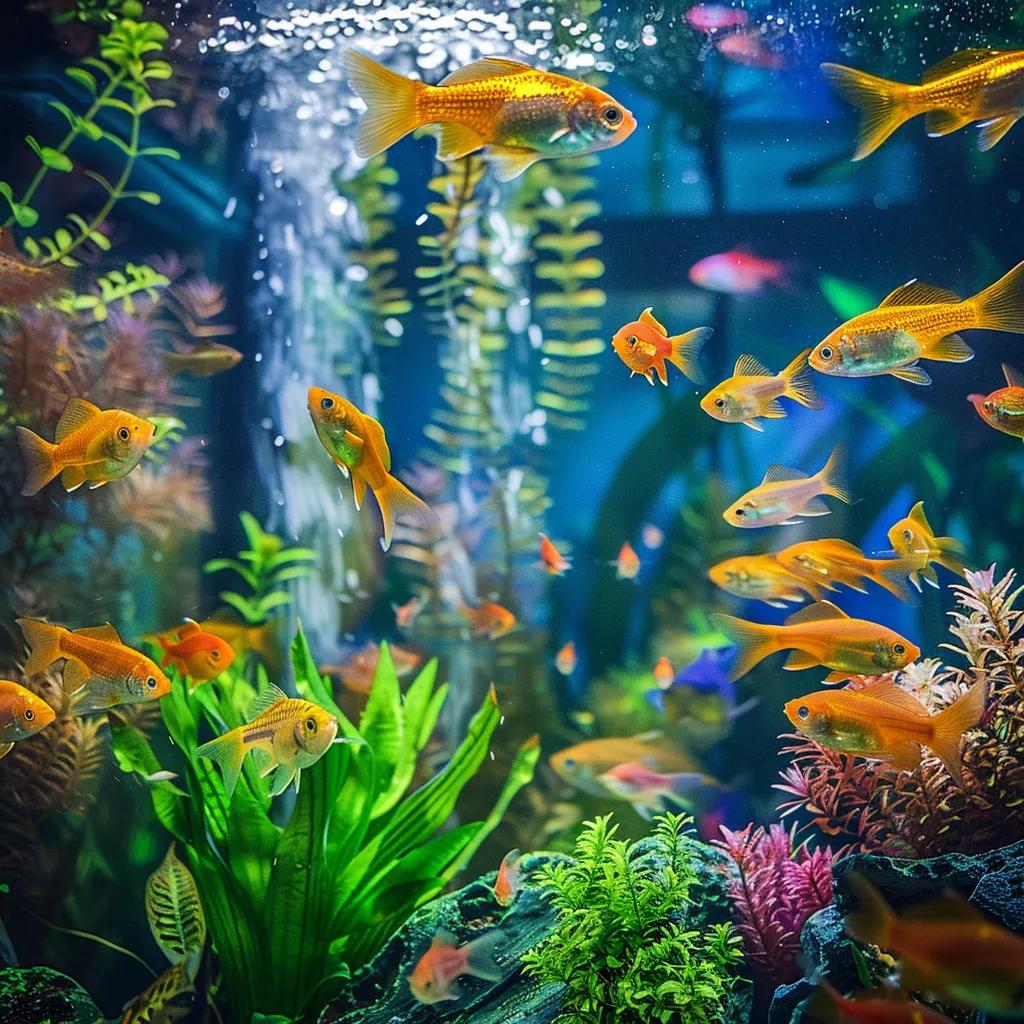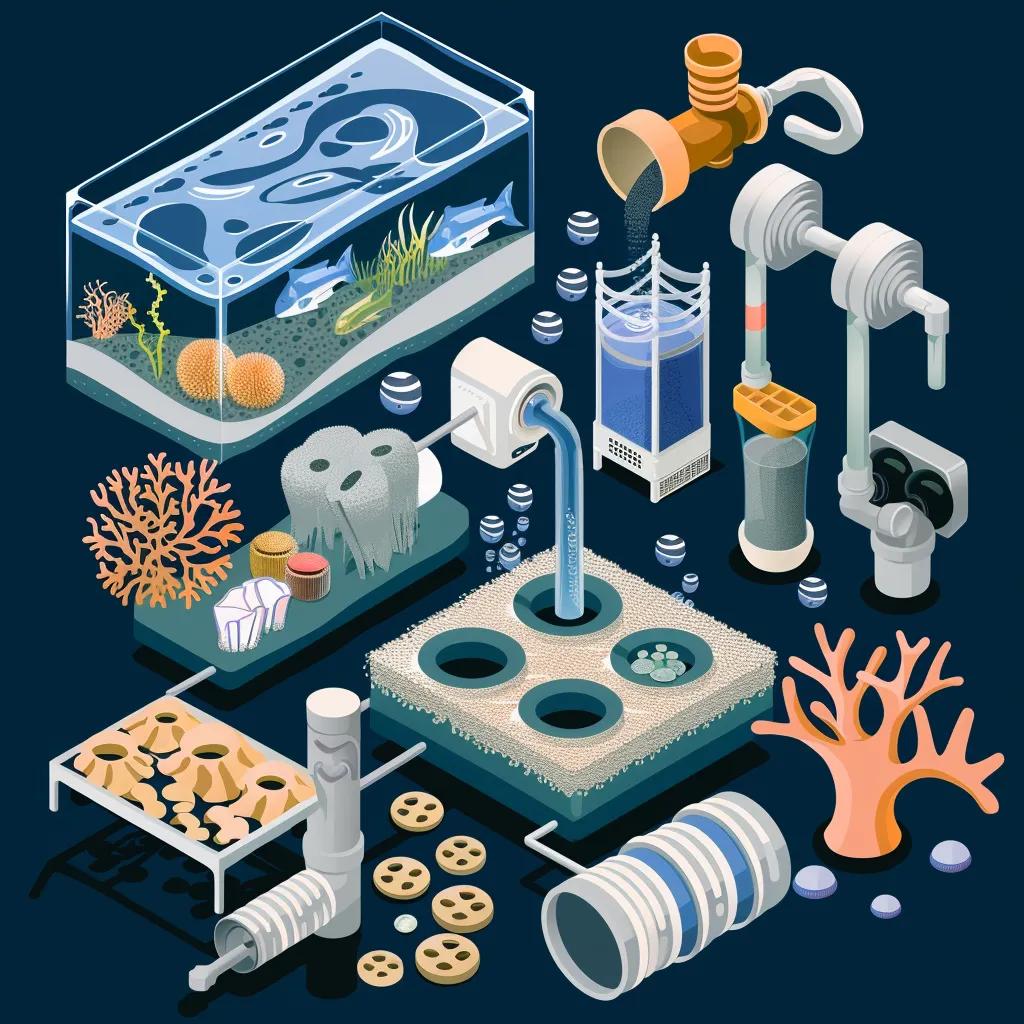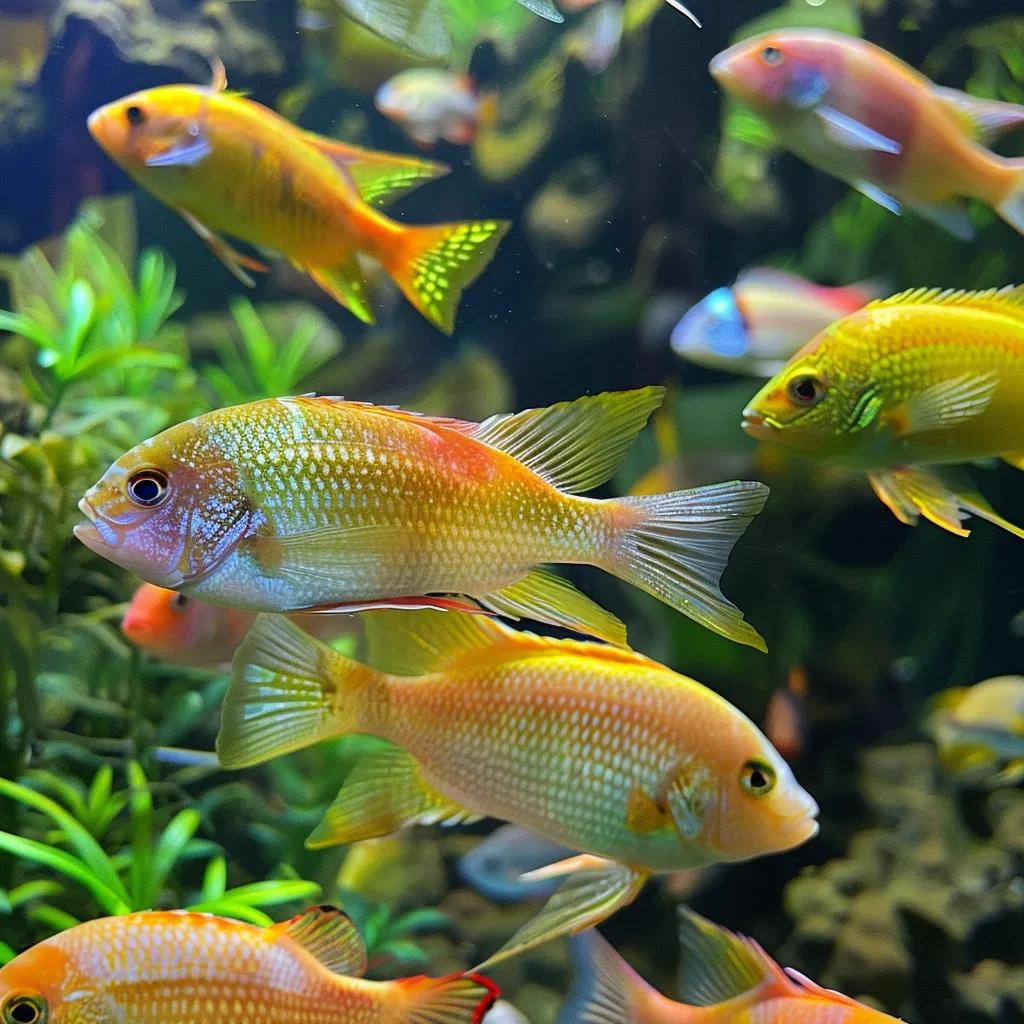
Benefits of a Quality Fish Tank Filter: How It Improves Aquarium Water and Fish Health

A reliable fish tank filter transforms murky, toxic water into a crystal-clear habitat that sustains aquatic life, prevents disease, and promotes vibrant behavior. Aquarium owners who experience cloudy water, algae outbreaks, or stressed fish often overlook that the benefits of a good filter extend far beyond clarity—they underpin healthy biochemistry, stable ecosystems, and long-term tank balance. This guide explains what a fish tank filter is and why it is essential, explores mechanical, chemical, and biological filtration types, matches filter models to tank sizes and species, links filtration to fish health, details maintenance best practices, unpacks the nitrogen cycle, addresses common filtration concerns, surveys eco-friendly innovations, and summarizes selection tips.
What Is a Fish Tank Filter and Why Is It Essential for Your Aquarium?
A fish tank filter is a device installed in an aquarium that continuously removes physical debris, chemical toxins, and biological waste to maintain optimal water quality, protect fish health, and support ecological balance. By channeling water through distinct media layers, a filter prevents ammonia spikes and clarifies water, creating a stable environment for aquatic pets. This foundational concept sets the stage for understanding how each component and filtration method contributes to a thriving aquarium.
How Does a Fish Tank Filter Work to Maintain Water Quality?
A filter draws aquarium water through intake tubes and directs it across mechanical pads, chemical media, and biological substrates in sequential stages. Mechanical pads trap solid particles such as uneaten food and fish waste, chemical media adsorb dissolved impurities like tannins and medications, and porous biological substrates host nitrifying bacteria that convert toxic ammonia into less harmful nitrate. As water cycles through these stages, it emerges purified, oxygenated, and chemically balanced—ideal conditions for fish to flourish.
What Are the Key Components of a Fish Tank Filter?
A typical filter consists of an intake tube, water pump, filter housing, and layered media packs. For more information on maintaining your aquarium, check out how to keep turtle tank clean.
| Entity | Attribute | Value |
|---|---|---|
| Intake Tube | Function | Draws water into filter |
| Water Pump | Flow Rate | 200–1000 L/h depending on model |
| Mechanical Pad | Media Type | Sponge or floss trapping particles |
| Chemical Cartridge | Media Type | Activated carbon or resin for toxin removal |
| Biological Substrate | Surface Area | High-porosity ceramic rings or bio-balls for bacteria growth |
These components work in concert to sustain aquarium water quality, laying the groundwork for selecting the right filter type in different setups.
How Does Filtration Support a Healthy Aquarium Environment?
By continuously removing waste and maintaining stable water chemistry, filtration prevents ammonia and nitrite accumulation, reduces algae growth, and preserves dissolved oxygen levels. Clean water enhances fish immunity, minimizes stress, and inhibits pathogen proliferation. This environmental stability leads directly into exploring specific filtration methods that deliver these ecosystem-supporting benefits.
What Are the 3 Types of Aquarium Filtration and Their Benefits?

Aquarium filtration comprises three core methods—mechanical, chemical, and biological—each addressing distinct water-quality challenges to ensure a balanced aquatic ecosystem.
Benefits of Different Filtration Methods
Mechanical, chemical, and biological filtration methods each play a vital role in maintaining water quality in aquariums. Mechanical filtration removes solid waste, chemical filtration eliminates dissolved impurities, and biological filtration supports the growth of beneficial bacteria that break down harmful substances.
Smith, B., Aquatic Filtration Systems (2023)
This citation reinforces the article's discussion of the three main types of aquarium filtration and their respective benefits for a healthy aquatic environment.
How Does Mechanical Filtration Remove Solid Waste?
Mechanical filtration uses sponges, pads, or floss to physically capture particles larger than 5 µm, such as uneaten food, fish excrement, and plant debris. By intercepting solids before they break down, mechanical filters prevent clogs, reduce cloudiness, and limit ammonia production. Effective debris removal paves the way for chemical media to target dissolved compounds without obstruction.
What Role Does Chemical Filtration Play in Water Purity?
Chemical filtration employs media like activated carbon, zeolite, or ion-exchange resins to adsorb dissolved organics, discoloration, and residual medications. These media bind toxins at the molecular level, eliminating odors, tannins, and drug residues that mechanical pads cannot trap. Chemical adsorption refines water clarity and chemical stability, enabling healthier fish behavior and color vibrancy.
Why Is Biological Filtration Crucial for Beneficial Bacteria Growth?
Biological filtration provides porous substrates where nitrifying bacteria colonize and convert toxic ammonia (NH₃) into nitrite (NO₂⁻) and then into less harmful nitrate (NO₃⁻). This nitrification process underpins the nitrogen cycle, controlling toxic waste levels and sustaining fish health. A robust biological filter ensures continuous detoxification, forming the core of a self-maintaining aquarium ecosystem.
How Do Different Filter Types Use These Filtration Methods?
Different aquarium filter models integrate mechanical, chemical, and biological stages in unique configurations. The table below compares common filter types and their media sequence.
| Product Type | Mechanical Media | Chemical Media | Biological Media | Typical Use Case |
|---|---|---|---|---|
| HOB Filter | Foam pad | Carbon cartridge | Bio-wheels or ceramic floss | Beginners and small tanks |
| Canister | Sponge layers | Customizable cartridges | Bio-rings or bio-foam | Large aquariums and planted tanks |
| Sponge | Large sponge block | N/A | Sponge surface | Breeding and fry tanks |
| Undergravel | Gravel substrate | N/A | Gravel matrix | Low-maintenance setups |
Each filter type arranges media to optimize flow and waste removal, preparing aquarists to choose models based on tank size and fish requirements.
Which Fish Tank Filter Type Is Best for Your Aquarium Size and Fish Species?
Selecting the right filter model involves balancing tank volume, bioload, species sensitivity, and maintenance preferences.
What Are the Advantages of Hang-on-Back (HOB) Filters?
Hang-on-back filters mount on the tank rim, offering easy installation and media replacement without internal clutter. They provide efficient mechanical trapping, customizable chemical cartridges, and rotating bio-wheels that enhance oxygenation and bacterial colonization. HOB filters suit aquarists seeking convenience and consistent water turnover in small to medium tanks.
When Should You Choose a Canister Filter?
Canister filters house media in external canisters, enabling large media volumes and advanced customization. They deliver high flow rates, quiet operation, and versatile media options—ideal for heavily stocked aquariums, planted environments, and saltwater systems. Aquarists with demanding filtration needs or large tanks benefit most from canister designs.
How Do Sponge and Undergravel Filters Compare?
Sponge filters air-lift water through coarse foam, combining mechanical removal with bacterial habitat; they excel in breeding tanks and shrimp setups due to gentle flow. Undergravel filters draw water through the gravel bed, leveraging the substrate as biological media but offering limited chemical filtration. Both models require low maintenance and minimal equipment footprint.
How to Match Filter Flow Rate and Capacity to Your Tank’s Bioload?
Matching filter flow to bioload ensures effective waste processing without stressing fish. A rule of thumb: select a filter rated for double to triple your tank volume per hour. For example, a 100 L tank housing active species should use a filter with at least 200–300 L/h flow rate. Adequate capacity supports biological colonization and prevents nutrient overload.
How Does a Quality Fish Tank Filter Support Fish Health and Prevent Diseases?

A filter that consistently removes toxins, stabilizes chemistry, and preserves oxygen levels directly influences fish well-being and disease resistance.
What Fish Diseases Are Linked to Poor Filtration?
Inadequate filtration leads to ammonia poisoning, nitrite toxicity, fin rot, and fungal infections as waste accumulates and pH fluctuates. High ammonia causes gill damage and lethargy, while unbalanced nitrates stress immune systems, making fish vulnerable to pathogens. Proper filtration interrupts these toxicity pathways, preventing common aquarium diseases.
How Does Filtration Reduce Stress and Promote Vibrant Fish?
Clean, oxygen-rich water reduces respiratory effort, enabling fish to feed actively and display natural behaviors. Stable parameters eliminate abrupt chemical swings that induce stress responses, such as hiding or color fading. A well-maintained filter fosters an environment where fish exhibit their full vibrancy and social dynamics.
How Does Clear Water Improve Fish Behavior and Longevity?
Clear water enhances visibility for schooling, territorial displays, and spawning rituals, encouraging natural interactions. Reduced particulate matter lowers abrasion on fins and scales, preventing injury. Over time, steady water quality extends fish lifespan by minimizing chronic stress and organ damage, underscoring the vital role of reliable filtration.
How to Maintain Your Fish Tank Filter for Optimal Performance and Longevity?
Consistent maintenance ensures filtration efficiency, preserves beneficial bacterial colonies, and prevents equipment failure.
How Often Should You Clean Your Fish Tank Filter?
Mechanical media should be rinsed every 2–4 weeks using dechlorinated water to remove trapped debris without disrupting bacteria. Chemical cartridges replace monthly or as adsorption capacity declines. Biological substrates require minimal cleaning to preserve nitrifying colonies and only need flushing when flow significantly decreases. how to keep turtle tank clean
When and How Should You Replace Filter Media?
Replace chemical media according to manufacturer guidelines—typically every 4–6 weeks—while mechanical pads may need swapping every 1–2 months. Biological media seldom require replacement unless physically degraded; when necessary, rinse in aquarium water to protect bacterial populations before swapping.
What Are Common Filter Problems and How Can You Troubleshoot Them?
Clogged intake, reduced flow, and noise often signal debris buildup or worn impellers. Inspect pump housing, clean rotor assemblies, and check water levels. Airlocks can be cleared by priming or tilting the filter. Address leaks by ensuring O-rings are seated correctly and housing is sealed before restoring power.
What Tools and Supplies Are Needed for Filter Maintenance?
Effective maintenance requires:
- A clean bucket reserved for aquarium use
- Dechlorinated or aged water for rinsing media
- Replacement media cartridges and sponges
- Small brushes for impeller cleaning
- Aquarium-safe lubricant for O-rings
What Is the Nitrogen Cycle and How Does Filtration Manage It in Aquariums?
The nitrogen cycle is the biochemical process by which fish waste and decaying matter produce ammonia, which beneficial bacteria convert into nitrite and then nitrate, maintaining safe toxin levels. Effective filters support each cycle stage by hosting bacterial colonies on dedicated media surfaces.
The Importance of the Nitrogen Cycle in Aquariums
The nitrogen cycle is a crucial process in aquariums, where beneficial bacteria convert harmful ammonia from fish waste into less toxic substances. This biological process is essential for maintaining a healthy aquatic environment and preventing the buildup of dangerous compounds that can harm fish.
Jones, A., Aquarium Water Quality (2022)
This research supports the article's explanation of the nitrogen cycle and its importance in maintaining a balanced aquarium ecosystem.
How Does Fish Waste Produce Ammonia in the Aquarium?
Fish breathe and excrete nitrogenous waste directly into water as ammonia (NH₃), a highly toxic compound that accumulates rapidly in closed systems. Uneaten food and decaying plants further contribute to ammonia buildup, necessitating continuous removal.
How Do Beneficial Bacteria Convert Ammonia to Nitrite and Nitrate?
Nitrifying bacteria such as Nitrosomonas oxidize ammonia into nitrite (NO₂⁻), and Nitrobacter species then oxidize nitrite into nitrate (NO₃⁻). These sequential reactions occur on porous filter media, detoxifying waste and completing the nitrogen cycle essential for aquatic health.
Why Is Managing Ammonia, Nitrite, and Nitrate Levels Critical?
Ammonia and nitrite are lethal to fish at low concentrations, causing gill damage and metabolic disruption. While nitrate is less toxic, high levels lead to algae blooms and chronic stress. Regular monitoring and filtration keep all three compounds within safe thresholds, preserving ecosystem balance.
How Does a Filter Promote Beneficial Bacteria Growth?
Filter media provide extensive surface area and stable water flow, creating ideal conditions for bacterial colonization. Continuous water contact with media ensures nutrient supply for bacteria, which in turn accelerates waste conversion and upholds water quality.
What Are Common Questions About Fish Tank Filters?
Aquarists often wonder about risks, benefits, performance indicators, and combining filters to optimize tank health. Addressing these queries enhances confidence in choosing and maintaining filtration systems.
What Happens If You Don’t Use a Filter in Your Fish Tank?
Without a filter, waste accumulates unchecked, swiftly elevating ammonia and nitrite to lethal levels. Water turns cloudy, oxygen drops, and fish exhibit gasping behavior or lethargy before succumbing to toxic stress.
How Do Filters Make Fish Happier and Healthier?
By removing toxins and stabilizing parameters, filters reduce physiological stress, enabling fish to feed regularly, maintain vibrant coloration, and engage in natural behaviors such as schooling or breeding.
How Can You Tell If Your Filter Is Working Properly?
Consistent water flow, clear water, stable pH readings, and absence of ammonia spikes indicate proper function. Observing filter output for debris-free, oxygen-rich water stream confirms operational efficiency.
Can You Use Multiple Filters for Better Aquarium Health?
Yes, using parallel filters such as a primary HOB filter with a supplemental sponge unit enhances redundancy, increases surface area for bacteria, and smooths flow variations, delivering superior water quality and system resilience.
How Do Sustainable and Energy-Efficient Filters Benefit Your Aquarium and the Environment?
Modern filter designs prioritize low power consumption, reusable media, and eco-friendly materials to reduce environmental impact and operational costs while maintaining superior performance.
What Are the Advantages of Eco-Friendly Filter Media?
Biodegradable pads, ceramic-based cartridges, and reusable bio-foams minimize landfill waste and reduce reliance on single-use plastics. These media options maintain high adsorption capacity and bacterial colonization while supporting sustainable aquarium practices.
How Do Energy-Efficient Filters Reduce Aquarium Costs?
Low-wattage pumps and optimized flow channels cut electricity consumption by up to 50%, lowering monthly energy bills. Quiet, brushless motors with smart flow controls adjust power based on bioload needs, providing efficient filtration without noise pollution.
What Innovations Are Emerging in Aquarium Filtration Technology?
Next-generation filters incorporate UV sterilization chambers, Bluetooth-enabled flow monitoring, and modular media bays for custom configurations. Magnetic impeller systems and self-cleaning siphons streamline upkeep, representing the future of aquarium care.
How to Choose the Right Fish Tank Filter: Summary of Key Benefits and Selection Tips
Selecting a filter involves weighing water volume, fish species sensitivity, maintenance ease, and eco-credentials to maximize benefits and suit your aquarium goals.
What Are the Top Benefits of Investing in a Quality Filter?
- Stable Water Chemistry – Continuous toxin removal prevents parameter swings.
- Disease Prevention – Minimizes ammonia and nitrite-related illnesses.
- Enhanced Oxygenation – Improves respiration and metabolism.
- Crystal-Clear Visibility – Promotes fish display and behavioral observation.
- Reduced Maintenance – Efficient media layers extend cleaning intervals.
These advantages translate directly into healthier, more vibrant aquatic environments.
How to Balance Filter Features with Your Aquarium Needs?
Match flow rate (2–3× tank volume per hour), media versatility, noise level, and energy consumption to your fish species, bioload, and maintenance schedule. Prioritize customizable media bays if you rotate chemical treatments or host delicate fry requiring gentle flow.
Where to Find Reliable Fish Tank Filters and Support?
Specialized aquarium retailers and online aquatic supply stores offer expert guidance, warranties, and replacement parts. For complementary pet care, Talis-Us provides high-quality freeze-dried treats for dogs, cats, reptiles, and birds at Freeze-Dried Treats - Talis-Us to support the health of all your other companion animals.
A carefully chosen filter tailored to your tank’s dimensions and stocking levels ensures lasting water quality, robust fish health, and an effortlessly maintained aquatic showcase.






